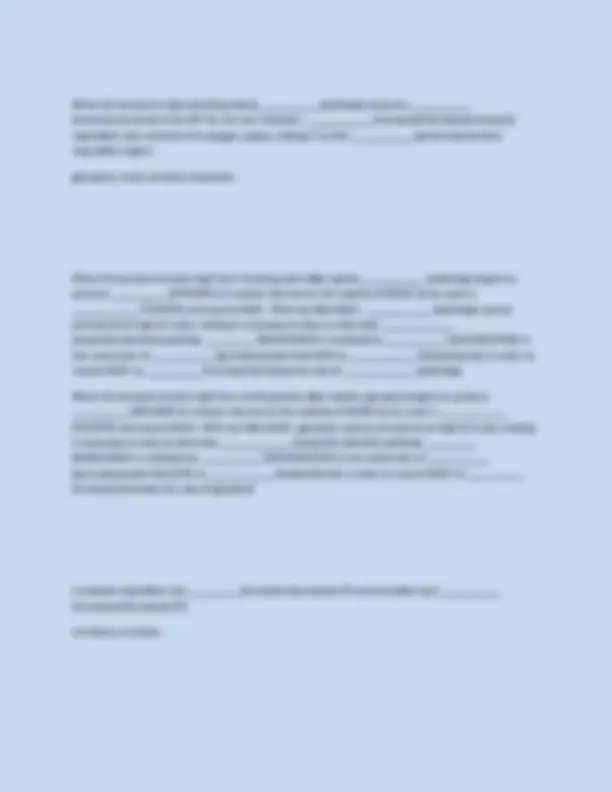






























































































Study with the several resources on Docsity

Earn points by helping other students or get them with a premium plan


Prepare for your exams
Study with the several resources on Docsity

Earn points to download
Earn points by helping other students or get them with a premium plan
Community
Ask the community for help and clear up your study doubts
Discover the best universities in your country according to Docsity users
Free resources
Download our free guides on studying techniques, anxiety management strategies, and thesis advice from Docsity tutors
CHEM 4420: Exam 1 Introductory College Chemistry Exam Questions With Complete Solved Answers.
Typology: Exams
1 / 154

This page cannot be seen from the preview
Don't miss anything!





























































































what does metabolism mean in greek?
change
what is metabolism?
the sum of chemical changes that convert nutrients into ENERGY and the chemically-complex products of cells.
Metabolism contains hundreds of enzyme reactions organized into ________.
pathways
substrates are transformed to products via many specific ___________.
intermediates
what evolutionary proof derived from metabolism shows that we descend from a common ancestral form?
organisms show a marked similarity in their major metabolic pathways despite a near infinite number of organic chemistry combinations. ALSO diversity based on source of energy and source of carbon.
Earth: 4.5 billion yo
First lifeform: 3.5 billion yo
First primates: 55 million yo
What is at the core of metabolism?
ATP cycle
what are metabolic maps?
metabolic maps depict a series of reactions and intermediates of the metabolome with dots representing intermediates and lines representing enzyme-catalyzed reactions.
Wishart drew the first version of the human metabolome with:
______ metabolites
______drugs
______food components
2500 metabolites
1200 drugs
3500 food componenets
What is represented by dots with only 1-2 lines through them?
nutrient storage compound or end product
light
What is the energy source for chemotrophs?
organic (glucose) or inorganic energy (including sulfur)
What are aerobes?
Organisms that require oxygen to grow
What are anaerobes?
organisms that breakdown glucose in the absense of oxygen.
What do phototrophs use light for?
driving the synthesis of organic molecules (ATP)
What do heterotrophs use as building blocks?
organic molecules produced by phototrophs
photosynthesis and cellular respiration with sun
What are the two functions of metabolism?
Metabolism is amphibolic
goes in between catabolism and anabolism
What is catabolism?
degradative pathways involving breakdown.
usually energy-yielding
What is anabolism?
biosynthetic pathways
build-up
energy-requiring
Structure of NADH/NADPH
Structure of ATP with mechanism for hydrolysis
Where is the energy within ATP housed? How much in each?
phosphodiester bond (~-30 kJ/mol each)
What is housed within an NADH?
One proton (H+) and two electrons (2e-)
How many stages are in catabolism and what are they?
Stage 1: large biomolecules (proteins, polysaccharides, lipids)
Stage 2: building block molecules degraded into common degradation product (ACETYL COA and/or PYRUVATE)
Stage 3: catabolism converges to a few end products. stage 3 is where major energy production occurs
What does it mean to be amphibolic?
a biochemical pathway that involves both catabolism and anabolism.
Even if anabolic and catabolic pathways involve the same substrate and product, why are they not necessarily the same?
What value of Gibb's Free Energy (∆G) provides that a reaction will be spontaneous?
∆G<-8 kJ/mol
Activation of one path is accompanied by _________________ of the other path?
inhibition
In what state are fuel molecules (red/ox)?
relatively reduced state
What are the states of reduction
decreasing state of reduction to the right
What happens to substrates during oxidative catabolism?
they lose hydride ions or reducing equivalents (H- ions)
What collects electrons from oxidative catabolism? AKA what is the oxidizing agent?
nicotinamide adenine dinucleotide (NAD+) collects the electrons in this form and shuttles them to mitochondrial ETS to fuel oxphos
What is a reducing equivalent?
activated hydrogen, hydride ion, 2 electorns and proton...
can view the hydride ion as an "electron shuttle" that is essential in driving reductive biosynthesis
What provides reducing equivalents (electrons) to power anabolic processes?
NAD+ is an electron ___________ (donor/acceptor) in _____________ (ox/red) _____________ (catabolism/anabolism).
NADPH is an electron ___________ (donor/acceptor) in ____________ (ox/red) _______________ (catabolism/anabolism) which is also known as _________(ox/red) __________________ in metabolism.
acceptor; oxidative; catabolism
donor; reductive; anabolism; reductive; biosynthesis
What is the recommended daily intake (RDI) of total fat?
65g
What is the recommended daily intake (RDI) of saturated fat?
20g
What is the recommended daily intake (RDI) of cholesterol?
300mg
What is the main function of carbohydrates?
provide energy
What process breaks down complex carbohydrates (CHOs) to simple sugars?
glycolysis
What is known as 'brain food'?
glucose
What happens when there is an excess of dietary CHOs?
increase in triacylglycerol and glycogen production
What happens when there is not enough dietary CHOs?
ketone bodies form from acetate as 'alternate brain food'
What are carbohydrate's contribution(s) to anabolism?
used for biosynthesis of:
nucleotide***
nucleic acid***
glycoprotein
glycolipid
***indicates CHOs provide essential components for nucleotides and nucleic acids.
What is the difference between simple carbohydrates and complex carbohydrates?
simple: easy to break down quickly, high in refined sugars, do provide energy, lack vitamins, minerals, and fiber. Examples: fruits, milk, cake, candy, and other refined sugars.
complex: not-so-easy to break down quickly, provide longer-term energy. contain vitamins, minerals, and fiber. Examples: pasta, rice, breads, starchy vegetables.
What is the culprit of obesity?
refined sugars from simple carbohydrates
What are fat contributions to anabolism?
used for phospholipid biosynthesis (essential in cell membrane)
What happens if a moderate excess of fat is consumed?
adipose tissue is synthesized
What happens if a far excess of fat is consumed?
cardiovascular problems
What happens if not enough of certain fatty acids are consumed such as those not synthesized in humans?
BAD THINGS!
No arachidonic acid --> no prostaglandins --> clotting problems!!!
Essential Fatty Acids (EFA) to know (5).
What does linoleic acid look like?
C18:2 (omega-6)
What does arachidonic acid look like?
C20:4 (omega-6)
What does linolenic acid look like?
C18:3 (omega-3)
What does eicosapentaenoic acid look like?
C20:5 (omega-3)
What are protein contributions to energy production? (2)
Of note, dietary protein supplements the endogenous protein that is recycled!
Three problems with too much protein consumption
What is fiber?
insoluble dietary CHOs
What does dietary fiber do?
stimulates 'regularity'
What are fiber's contributions to energy production?
none
What are fiber's contributions to anabolism?
none
Does fiber have a health benefit?
Yes
Decreases risk of cardiovascular disease (CVD) and maybe colorectal cancer (CRC)
What is fiber's role in hunger?
keeps hunger in check by indirectly regulating body glucose levels.
Examples of soluble fiber
fruits, broccoli, carrot, some legumes